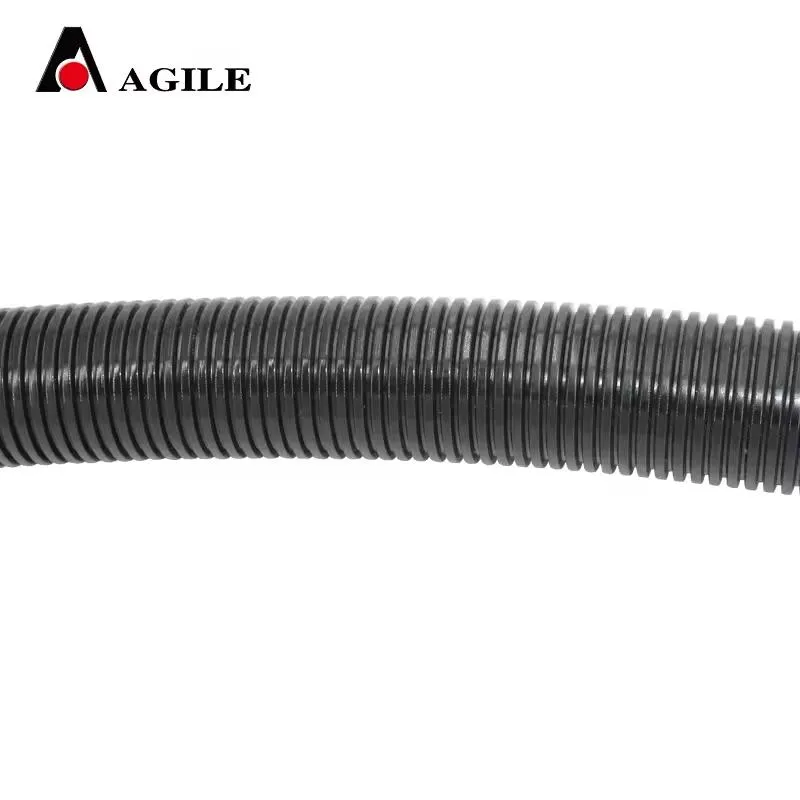split conduit tubing
Understanding Split Conduit Tubing A Comprehensive Guide
In the world of electrical installations and cable management, split conduit tubing has emerged as a versatile solution for protecting and organizing wires. This innovative product caters to various industries, including construction, telecommunications, and automotive sectors. Its unique design allows for effortless installation of cables while providing essential protection against environmental hazards and mechanical damage. This article explores the purpose, benefits, applications, and installation of split conduit tubing.
What is Split Conduit Tubing?
Split conduit tubing is a type of protective sheath made from flexible materials such as polyethylene or PVC. The split design means the tubing has a longitudinal cut allowing it to be easily wrapped around existing cables without needing to disconnect them. This feature is particularly useful in maintenance environments where downtime needs to be minimized.
Benefits of Using Split Conduit Tubing
1. Easy Installation One of the primary advantages of split conduit tubing is its straightforward installation process. The split design permits quick application around cables without the need to remove or disconnect electrical components. This feature is invaluable for retrofitting existing installations or for use in confined spaces.
2. Protection Against Damage Split conduit tubing serves as a barrier against various environmental factors, including moisture, heat, chemicals, and physical abrasion. This added layer of protection can prolong the life of electrical cables and prevent costly repairs and replacements.
3. Organized Cabling Managing cables can be challenging, especially in complex environments. Split conduit tubing helps maintain order among wires, reducing clutter and the likelihood of tangling. This enhanced organization also simplifies troubleshooting and maintenance tasks.
4. Flexibility The flexibility of split conduit tubing allows it to easily adapt to the contours of different installations. This makes it ideal for applications where rigid conduit might not fit properly or would be difficult to install.
5. Cost-Effective Solution By prolonging the lifespan of cables and reducing the risk of damage, split conduit tubing ultimately results in cost savings. Additionally, the lightweight and user-friendly installation aspects reduce labor costs associated with electrical projects.
Applications of Split Conduit Tubing
Split conduit tubing is widely used in various applications, including
split conduit tubing

- Electrical Installations In both residential and commercial buildings, split conduit tubing is employed to protect electrical wiring from damage and ensure compliance with safety standards
.- Telecommunications In telecom installations, split conduit tubing provides protection for sensitive cabling, notably fiber optics that require additional safeguards due to their fragility.
- Automotive Automotive manufacturers and repair shops use split conduit tubing to protect wiring harnesses from heat and friction, helping maintain vehicle reliability and safety.
- Industrial Equipment In manufacturing environments, split conduit tubing is utilized to shield control cables and wiring from oily or dirty conditions, ensuring continuous operation without interruptions.
Installation Tips
Installing split conduit tubing is a straightforward process, but here are some tips to ensure optimal results
1. Choose the Right Size Ensure that you select the appropriate diameter for your cables to provide adequate protection without being too tight, which could cause strain on the wires.
2. Clean the Cable Before installing, wipe down the cables to ensure they are free from dust or debris, which could potentially cause damage over time.
3. Secure the Ends While split conduit tubing is designed to stay in place, using zip ties or adhesive tape at the ends can provide additional security, especially in high-movement situations.
4. Consider Expansion If you anticipate needing to add more cables in the future, consider using a larger conduit to allow for easy installation of additional wires without requiring a complete overhaul.
Conclusion
Split conduit tubing is a robust solution for modern electrical installations and management, offering seamless protection and organization for various applications. Its unique design features and numerous benefits make it an essential component for professionals seeking efficiency, reliability, and safety in their projects. As technology continues to evolve, split conduit tubing will likely remain a fundamental aspect of electrical infrastructure, meeting the demands of both established and emerging industries.








